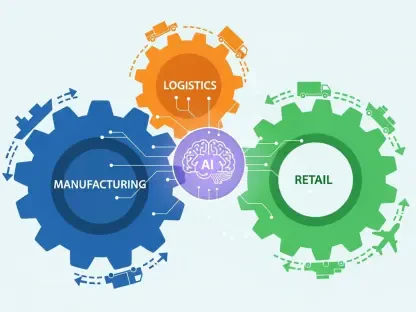Global AI adoption hit a hard ceiling as privacy rules, board scrutiny, and sector mandates stalled enterprise rollouts until sensitive conversations, uploads, and model outputs could reliably stay within national borders. OpenAI’s expansion of data-at-rest residency across the EEA and Switzerland, the United Kingdom, the United States, Canada, Japan, South Korea, Singapore, India, Australia, and the United Arab Emirates resets that ceiling by aligning AI operations with jurisdictional demands. The move reframes AI procurement from a legal headache into a controllable risk domain, opening paths for scaled deployment in finance, healthcare, public sector, and education while preserving broad model access.
Market Context And Strategic Stakes
Data locality has shifted from a compliance talking point to a deal-maker. Enterprises now weigh AI vendors by the precision of storage controls, the clarity of data flows, and the ease of documenting jurisdictional posture. OpenAI’s residency controls for ChatGPT Enterprise, ChatGPT Edu, and API projects with advanced data controls address that triad, letting admins configure new workspaces or projects to store assets in-region. That specificity resonates with procurement teams driving standardized clauses on retention, auditability, and transfer impact assessments.
Moreover, the expansion meets rising expectations that model excellence be matched by governance excellence. Buyers want the same rigor used in core cloud decisions—residency, encryption choices, access boundaries—applied to AI. As a result, platforms that operationalize locality without stripping features gain an edge in multi-market RFPs and sector-led frameworks where localization has become a baseline rather than a premium add-on.
Current Dynamics And Regional Patterns
Residency At Rest: Adoption Drivers
The core utility is straightforward: keep chat transcripts, file uploads, custom GPT assets, and image-generation artifacts in-region. That containment simplifies data protection reviews, reduces cross-border transfer exposure, and shortens legal cycles. Early European adopters, operating under GDPR and strict supervisory expectations, reported faster sign-offs once storage resided locally, particularly for workloads touching customer records, clinical documentation, or student data.
In parallel, North American banks and healthcare networks view residency as a way to unblock pilots previously parked by counsel. Storage locality enables staged rollouts: begin with lower-risk uses under clear retention rules, then expand to sensitive workloads as controls mature. This stepwise pattern is now common in RFPs that ask vendors to demonstrate both locality and flexible data minimization.
Operational Constraints And Trade-Offs
There is a boundary: inference remains in the United States. That means transient processing and model execution can constitute a transfer even when storage is regional. For risk owners, the architecture becomes a split model—regional storage, cross-border inference—with compensating controls: encryption in transit, tokenization for high-risk fields, and documented data flow maps to support transfer assessments.
From a performance lens, centralized inference sustains access to the full model catalog and frequent updates. In return, teams accept the burden of governance artifacts and exception management for sensitive data classes. Compared with fully sovereign stacks, this approach accelerates time to value and maintains feature velocity, though it demands disciplined evidence for auditors and regulators.
Ecosystem Nuances And Compliance Myths
Not every integration inherits the residency setting. Connectors, plugins, or third-party tools embedded in workflows may default to U.S. handling. Mature buyers vet each dependency, confirm retention and locality, and align vendor contracts with the primary residency posture. The biggest misconception is that storage locality equals full sovereignty; in reality, compliance hinges on end-to-end flows—callbacks, logs, analytics pipelines, and human access pathways.
Industry leaders increasingly institutionalize data path mapping as a standard operating procedure. That includes tagging workloads by risk, documenting encryption and key management, and placing guardrails on prompts that may include regulated data. The outcome is a governance layer that scales across markets, not a one-off for a single region.
Outlook And Projections
The near-term arc favors broader region coverage, finer-grained storage controls, and richer transparency surfaces such as standardized audit packs and residency attestations. Competitive pressure is likely to push optional inference residency, regional failover choices, and customer-managed key models as default expectations for large buyers. Encryption-in-use and confidential computing capabilities should gain prominence as regulators refine guidance on cross-border processing of sensitive categories.
Economically, localization is set to influence vendor shortlists and partner ecosystems. Platforms that deliver predictable locality with minimal feature trade-offs will win multi-country expansions. Expect procurement to prioritize vendors that can express explicit data flows, provide testable controls, and support phased rollouts that scale without reopening risk decisions each time a new team or geography adopts AI.
Strategic Implications And Next Moves
Enterprises can convert residency into speed by operationalizing a repeatable playbook. Start with a current-state inventory, classify workloads by risk, and apply residency settings to new ChatGPT workspaces or API projects at creation. Then map every data hop—including connectors and analytics stores—verify retention and access models, and file updated DPIAs and transfer assessments. Pilot with targeted use cases, monitor for latency or integration gaps, and expand in measured waves with clear exception tracking for cross-border inference.
For high-risk domains, pair residency with aggressive data minimization, encryption strategies, and layered tokenization. Build vendor reviews that test residency inheritance claims and demand evidence for logging and support access. Finally, establish a governance cadence that turns compliance artifacts into assets for stakeholder trust and board reporting, converting what once stalled projects into a durable advantage.
Bottom Line
Data residency had emerged as a decisive factor in enterprise AI adoption, and OpenAI’s expansion changed the procurement calculus by localizing storage while maintaining broad model access. The market favored vendors that balanced governance with capability, and buyers who embedded residency into architecture, documentation, and vendor management moved faster with fewer surprises. The most effective strategies emphasized end-to-end data flow clarity, disciplined exception handling for inference, and phased scaling that locked in compliance gains without sacrificing innovation.









